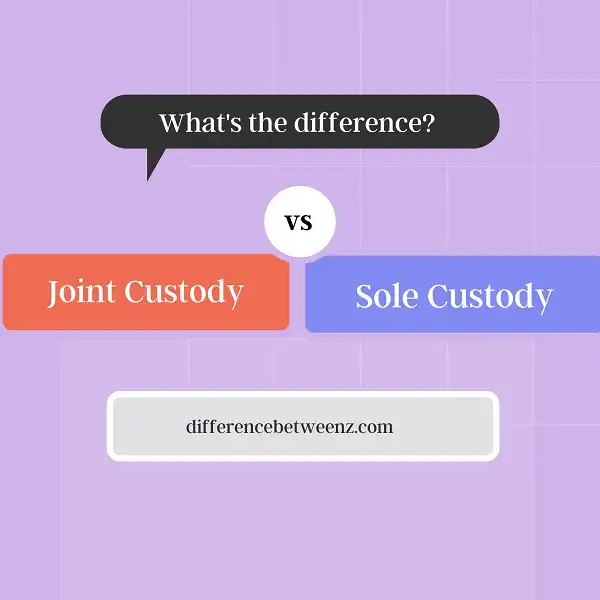There are two types of legal custody: joint and sole. Joint custody means both parents share decision-making authority, while sole custody means one parent has that authority. When making a determination as to what type of legal custody is in the best interests of the child, courts will consider a variety of factors, including the parents’ mental and physical health, their relationship with the child, and whether either party has been abusive or neglectful.
What is a Joint Custody?
Joint custody is a type of legal arrangement in which both parents are involved in the care and upbringing of their child. This type of custody often involves both parents sharing physical and legal custody, although it can also take other forms. Joint custody may be preferred by many parents because it allows them to maintain an ongoing relationship with their child, even after separation or divorce. Additionally, joint custody can help ensure that both parents remain invested in the child’s well-being during their upbringing. Regardless of how joint custody is implemented, the ultimate goal is to best serve the needs of the child. Whether you are considering pursuing joint custody or are curious about its ramifications, it is important to understand this arrangement and its implications for your family.
What is Sole Custody?
Sole Custody is an arrangement in which one parent has primary physical and legal custody of a child. The other parent may have visitation rights but does not have decision-making power or physical custody. Sole Custody is typically awarded in cases where one parent is deemed unfit to care for a child, or when there is a history of abuse or neglect. In some cases, Sole Custody may be awarded to one parent even if both parents are fit to care for the child. This arrangement is typically made in the best interests of the child, and to avoid conflict between the parents. Sole Custody arrangements can be temporary or permanent, and are typically reviewed by a judge on a yearly basis.
Difference between Joint and Sole Custody
Joint and sole custody are two different legal arrangements that parents can use to handle the care of their children. Joint custody refers to a situation in which both parents share decision-making responsibilities for their children, such as determining where they will live and go to school and making day-to-day decisions about things like healthcare needs and extracurricular activities. By contrast, sole custody is a situation in which one parent has the responsibility to make all legal and practical decisions for the child, while the other parent may have visitation rights. So while there are certain similarities between joint and sole custody, there are also important differences, including who has legal responsibility for making key decisions regarding the child’s welfare. Ultimately, choosing between joint or sole custody will depend on each individual family’s specific circumstances.
Conclusion
There are many factors to consider when determining the best custody arrangement for your family. The difference between joint and sole custody can be complex, but it is important to understand the benefits and drawbacks of each in order to make the best decision for your children.


